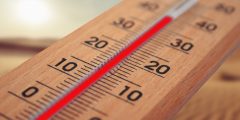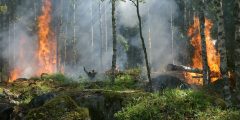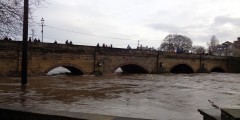Seeding clouds – seeding doubts
May 3, 2024
In 2009, two things happened in climate change discussions that at first glance seem to be quite unconnected. Firstly, the Royal Society released a seminal report on ‘geoengineering’—the deliberate alteration or creation of weather and climate conditions (which is generally considered unwise). Secondly, the ‘climategate‘ controversy emerged, portraying climate scientists as clandestinely tampering with or …
Orange is the new bleak*
September 1, 2023
I was recently reflecting on the way extreme weather events manifest themselves in different colours. Floods are brown and ugly; there is brown flood water and then there is brown mud everywhere (more on that here). Wildfires are orange and, in a sense, beautiful; there are orange sunsets and sunrises, but what’s left behind is …
Global boiling
August 4, 2023
On 27 July Secretary-General António Guterres gave a press conference at United Nations headquarters. He spoke about climate change against the backdrop of widespread floods, terrestrial and marine heatwaves and wildfires unfolding around the world and in the context of new data coming in from the World Meteorological Organization and the European Commission’s Copernicus Climate …
The climate speaks in words and pictures: Is anybody listening?
July 21, 2023
I can’t open twitter nowadays without being confronted by red-hot images of heatwaves, just like a few weeks ago it was all about wildfires, orange skies and smoke. The climate is speaking to us, indeed sending us smoke signals, from the air, the land and the water which are all alarmingly warm. This is not …
Climate change and language change
July 1, 2022
For over ten years I have now been thinking and writing about extreme weather events, especially floods and fires, and how they are verbally and visually represented in the media and beyond. Over that decade the issue of extreme weather has become increasingly topical and people no longer hesitate to discuss this topic in the …
When climate change hits home: A personal story
July 18, 2021
This month, Alice Bell has published an important book entitled Our Biggest Experiment: A History of the Climate Crisis. In it, she takes us “back to climate change science’s earliest steps in the eighteenth and nineteenth centuries, through the point when concern started to rise in the 1950s and right up to today, where the …
Extreme weather talk: The sequel to the sequel
June 28, 2019
I have written quite a few blog posts over the years about extreme weather (and weather and climate). In 2013 I also published an article with Rusi Jaspal about extreme weather images… That seems now a long time ago and much better work is now done on the images front! I wrote my last post …
Flooding and ‘the Dutch solution’
December 29, 2015
Some years ago, in the aftermath of Hurricane Sandy in 2012, US news media featured Dutch-style flood management as one of the engineering solutions that may prevent future devastating flooding in the regions affected. The same happened after the winter floods in the south of UK at the beginning of 2014 and similar references are …
Extreme weather talk: The sequel
June 4, 2015
Two years ago I published a blog post on extreme weather. This showed that unlike media reporting on climate change, which has generally been going down since 2007 (with some variations and a bit of an upsurge now, see Max Boykoff’s graph at CSTPR), media reporting on ‘extreme weather’ seems to be going up more …










